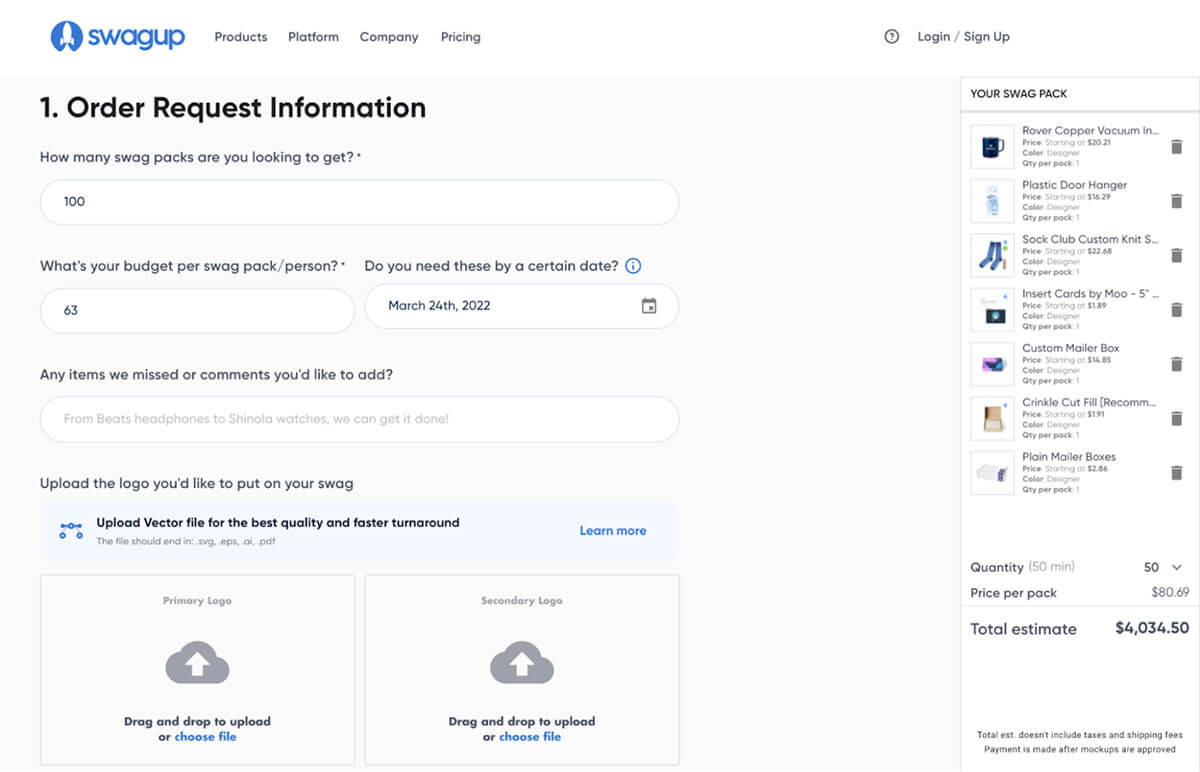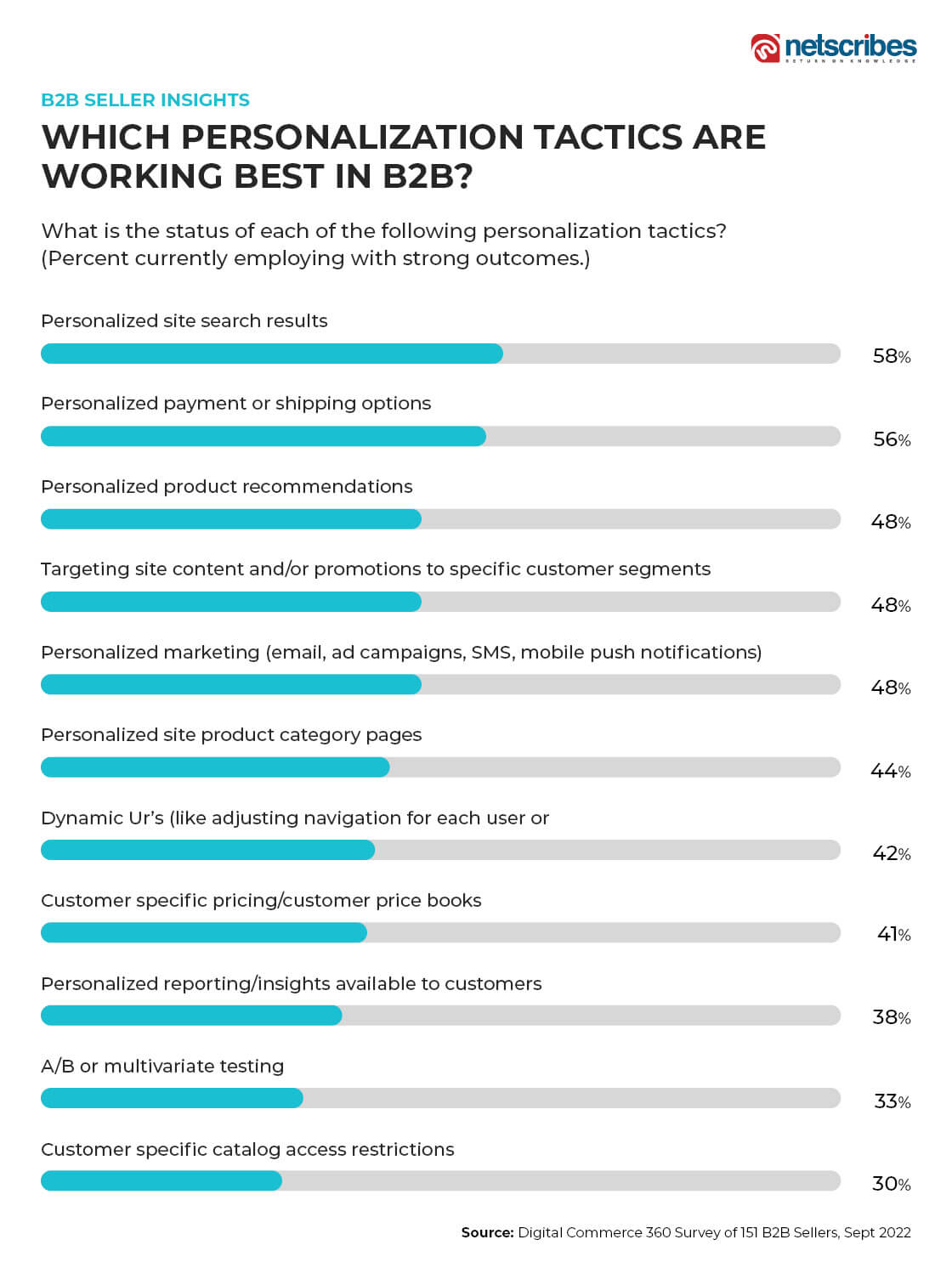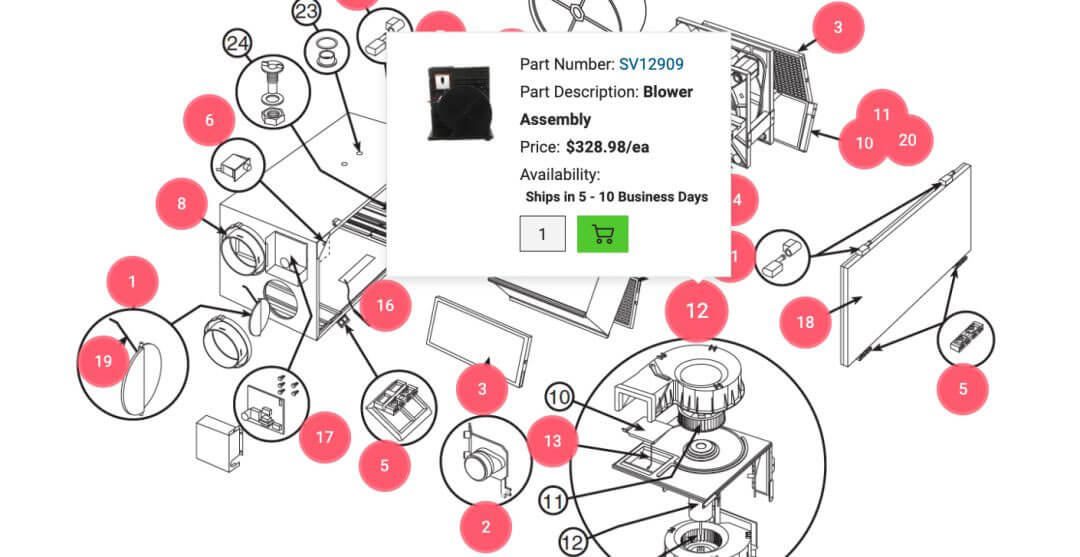HIGHLIGHTS
- B2B catalog management is essential in the digital age, optimizing operations and enhancing product visibility in a world where 90% of B2B buying journeys start with online searches.
- AI-powered catalog optimization, AR integration, and machine learning for fraud detection are future trends reshaping the landscape of B2B catalog management.
- Leveraging B2B catalog management involves investing in training, technology, and staying agile to adapt to evolving market dynamics, empowering businesses to deliver outstanding value to clients.
The paradigm shift in the realm of business-to-business (B2B) e-commerce, driven by digital transformation, places a growing emphasis on optimizing digital user experiences. Interestingly, a staggering 90% of B2B buying journeys commence with an online search, and the majority of interactions transpire via digital platforms. Here’s where B2B catalog management comes in. Yet, to maintain a competitive edge, it becomes imperative to glean insights from the world of business-to-consumer (B2C) practices while also tackling the unique intricacies inherent to B2B e-commerce.
What exactly is B2B catalog management?
B2B catalog management is the act of customizing, optimizing, and restructuring the wholesale product catalog for a fast and efficient buying process. It promises significant potential in lowering costs and ensuring B2B product quality. Join us as we delve into the significance of B2B catalog management in streamlining operations and explore its various facets.
Significance in streamlining operations
Traditionally, product information has been scattered across departments, stored in various formats, and accessed or modified by specific employees or systems. With Product Information Management (PIM), companies can consolidate and maintain consistent data, improving the productivity of their marketing and e-commerce teams.
PIM helps streamline catalog management with capabilities that increase productivity and ensure that product information is complete and ready for publication. Features such as mass editing and validation workflows improve team efficiency. Automation in workflow and business rule processing gives marketing and e-commerce teams more time to create compelling product experiences.
Also, it’s wise to remember that efficiency isn’t limited to marketing. Streamlining order management processes also helps reduce manual errors, minimizes order processing time, and enhances overall operational efficiency. It enables businesses to handle larger order volumes and manage resources effectively.
The role of B2B catalogs in business operations
1. Enhancing product visibility
Managing product visibility ensures that potential buyers can easily find and compare products. For B2B companies, this is crucial as businesses have limited time to find a supplier. Maximizing product visibility for specific target businesses can significantly ease the sales process.
2. Standardizing product information
E-commerce businesses often deal with multiple suppliers and distributors, each with different formats and information systems. Catalog Management guarantees standardized catalogs across all sales channels and distribution networks. It prevents errors during data transfers and enables the creation of electronic catalogs that support online purchases.
3. Enabling quick ordering processes
B2B order management integrates with inventory systems, providing real-time visibility into stock levels, order fulfillment status, and delivery tracking. This optimization prevents stockouts and streamlines fulfillment processes.

Benefits of implementing B2B catalog management
1. Improved search and navigation
For B2B buyers, purchases are often complex. Online catalogs can provide a spectacular product experience and remove any hesitations buyers may have. Also, purchasers are actively seeking specific products and precise specifications. They are inclined to rely on product identification codes like stock-keeping units (SKUs) to facilitate their procurement process. Personalized content, intuitive designs, and interactive functionality create a personalized experience, offering recommendations and trends based on previous searches.
2. Client personalization
Catalog personalization becomes crucial in B2B, where pricing can differ per customer or ordering situation. Tailoring catalogs to individual clients ensures that the content served is relevant to them.
Operating a B2B enterprise often involves added intricacy, as your product pricing may vary depending on the customer or specific ordering circumstances. This complexity underscores the significance of catalog personalization for your B2B online store. It’s crucial to meticulously assess your web store’s capability to manage displayed prices.
Moreover, if you opt to provide distinct content to various customer segments, it’s essential to verify whether your e-commerce solution accommodates tailored catalogs. Embracing this tailored catalog option ensures that the content presented to your customers aligns more closely with their specific needs and preferences.

3. Real-time inventory updates
Real-time updates on product availability are essential. Customers need accurate information to make informed purchasing decisions, and this feature builds confidence and encourages re-ordering.
Efficiently overseeing your product catalog enables you to monitor sales trends effectively. Through your e-commerce catalog solutions, you gain insights into the top-performing products. Seize these opportunities by enhancing the visibility and inventory of your most lucrative items, while scaling back on less profitable ones.
It’s essential to make this practice routine because customer preferences evolve in response to trends, seasons, and other time-sensitive factors influencing their purchasing behavior. You can categorize your catalog products based on the timeframe you wish to analyze. Opt for shorter periods to stay attuned to trends, while longer periods afford you a broader perspective on your product’s overall performance.
Key features of an effective B2B catalog management system
1. Product categorization and taxonomy
Understanding how industry leaders classify their products and creating a competitive category structure is critical. Avoid over-categorization, use attributes wisely, and test your taxonomy with users for optimal results.
2. Attribute and specification management
Collaborate with your team to build a comprehensive list of product attributes. Group attributes logically, utilize attribute types and rules to maintain data integrity, and consider implementing a Product Information Management (PIM) system for efficient attribute management.

3. Integration with ERP and CRM systems
Integration with ERP systems improves order processing, inventory control, and order tracking. Combining CRM and ERP provides a comprehensive view of clients, enhances workplace collaboration, and reduces training time.
Future trends in B2B catalog management
1. AI-powered catalog optimization
According to a recent study, the worldwide expenditure on artificial intelligence (AI) is anticipated to surge, with expenditures projected to escalate from USD 50.1 billion in 2020 to a staggering USD 110 billion by 2024.
AI algorithms can analyze historical data, customer behavior, and market trends to generate accurate demand forecasts. They automate tasks like order classification, fraud detection, and exception handling, improving efficiency.
2. Augmented Reality (AR) integration for product visualization
AR’s ability to provide 360-degree, 3D product views enhances component sourcing and allows clients to test products virtually, boosting confidence and efficiency.
3. Machine learning for fraud detection
Machine Learning identifies potential fraudulent activities by analyzing order patterns and customer behavior. This enhances order security and mitigates the risk of fraud.
KPIs for measuring success
1. Conversion rates and order frequency
Tracking conversion rates helps optimize the e-commerce site. Analyzing why and how customers navigate the catalog provides insights for improvement.
2. Customer Satisfaction Scores (CSAT)
Bryan Eisenberg, a popular marketing expert, author, and speaker rightly said, “For you to achieve your goals, visitors must first achieve theirs.” This simple truth will resonate well with B2B e-commerce players ready to step things up. Here’s where implementing tools to measure customer satisfaction is crucial. In-depth interviews with clients offer valuable feedback for enhancing the digital shopping experience.
Related reading: Planning a CSAT study? Here’s how you can derive better insights
Leveraging the full potential of B2B catalog management
To truly harness the power of B2B catalog management, businesses should consider investing in training and technology. Training your team in the best practices of catalog management ensures that your catalog is always up-to-date, accurate, and effective. Additionally, exploring advanced catalog management software solutions can streamline the process further, allowing your business to stay ahead of the competition.
Navigating the challenges
While the benefits are substantial, businesses should also be aware of potential challenges in B2B catalog management. These challenges may include data inaccuracy, disjointed user experience, and disruptions by emerging technology trends. Businesses that proactively keep an eye out to address them in time will rarely see their ROI stagnating.
Related reading: Efficient catalog management solution for wholesale marketplace sellers
In retrospect
B2B catalog management is not a one-time endeavor but an ongoing process. Businesses must adapt to changing customer expectations, technological advancements, and market dynamics. By staying agile and embracing innovation, your business can continue to maximize efficiency and deliver outstanding value to clients.
Last but not least, B2B catalog Management is a pivotal tool in the arsenal of modern businesses. It empowers them to streamline operations, enhance customer experiences, and adapt to the ever-changing landscape of B2B commerce. Embracing this strategy is not merely a choice but a necessity for businesses aiming for growth, efficiency, and customer satisfaction.
Service providers such as Netscribes assume a crucial role, offering essential assistance to brands and marketplaces in achieving ROI-centric e-commerce product catalog management. If you’re eager to explore how our expertise can empower your business to expand seamlessly and drive revenue growth to new heights through exceptional B2B catalog management, get in touch with us today.






